To rank high on Google, you need backlinks. And guest posting is a great way to get high quality backlinks. But to make it work, you need a system for guest posting at scale.
Here at Voila Norbert, we started out writing a couple of guest posts per month, and have scaled up to publishing more than 30 every month across our publications. Getting to this stage didn’t happen overnight. It took hard work and some skill.
In this article, I’ll explain how we ramped up our guest post production, and how you can replicate our techniques.
Why Guest Posting Produces Results
Before I show you how to scale up your guest posting efforts, it’s important to understand the benefits of a strong backlink profile.
Just a few years ago, people claimed that Google would soon stop factoring backlinks into its search rankings. Fast-forward to 2020, and it seems those fears were unfounded. Bloggers, content marketers, and digital entrepreneurs agree that backlinking still plays a significant role in determining search performance.
You can see the benefits our guest posting strategy has had for Voila Norbert.
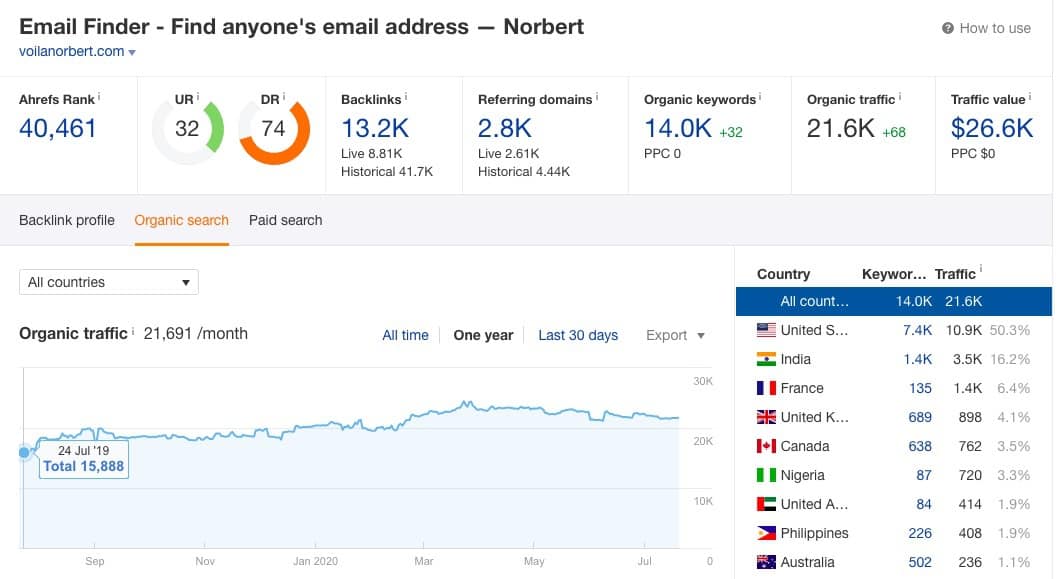
According to Ahrefs, we’re getting 6,000 more visitors than last year. Actually, that number is a lot higher as Ahrefs underestimates search volumes.
So, clearly, guest posting is still an effective strategy. Yet guest posting on just any site won’t help your rankings.
The best backlinks are from relevant sites with a high Domain Rating (DR). I’ll show you how to review link quality in a bit more depth later. For now, let’s look at how to set up a guest post strategy.
Identify Sites Where You Could Submit Guest Posts
For the moment, I’m going to assume you know how to create a great piece of keyword relevant content. Assuming you’ve created such a piece of content, you need to identify two things:
- The sites that you’re competing with for your desired keywords
- The websites where you could submit guest posts
Here’s how I do it.
Identifying the Competition
I start by searching Google for my desired keywords. Say I wanted to rank for the words “marketing strategy”:
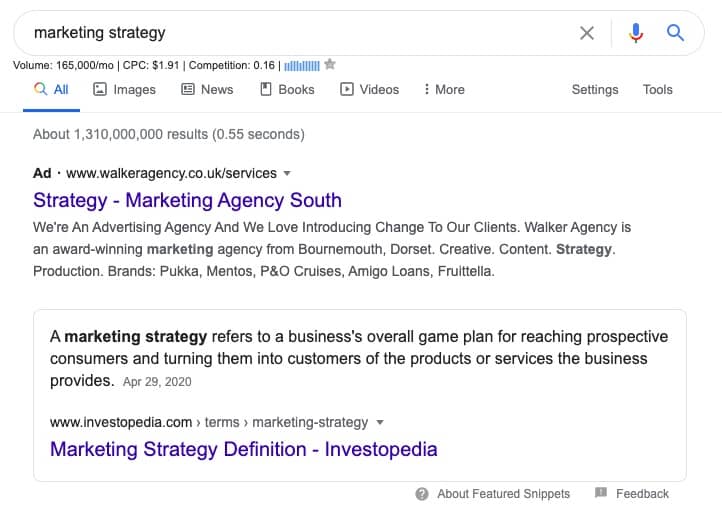
Discounting the results labeled “Ad,” the top search results are my competitors. I can check out those sites’ backlink profiles using a tool like Ahrefs:
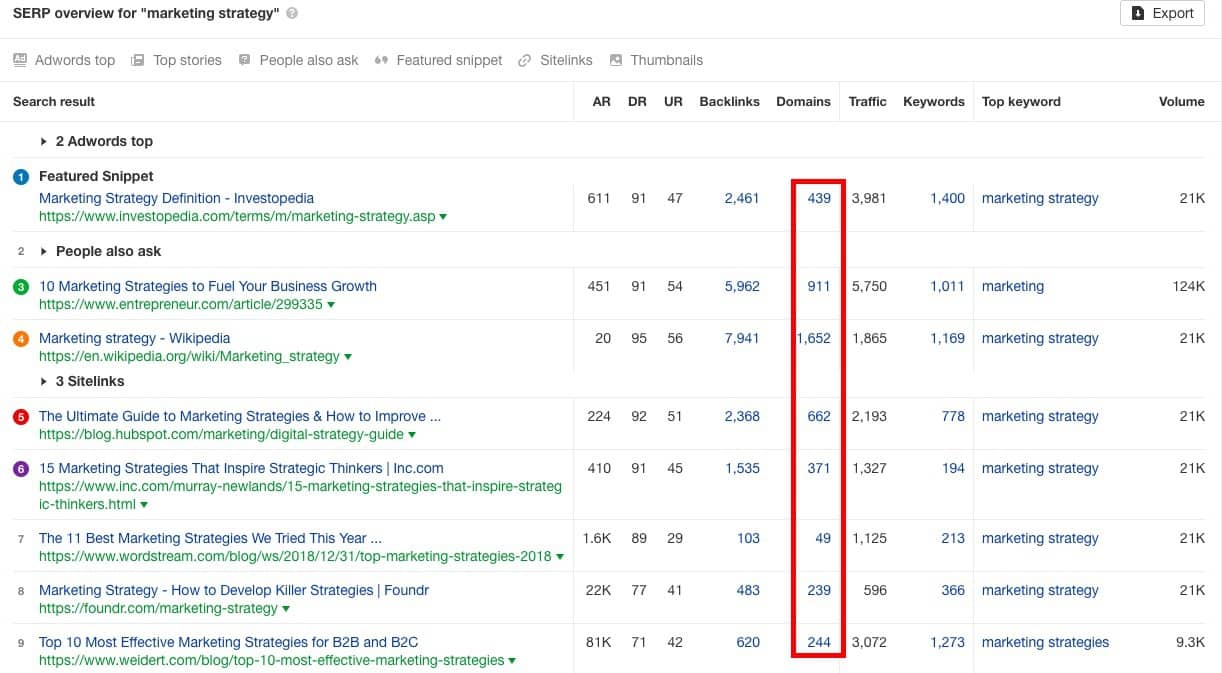
Review the total number of referring domains for the site, and how many of those referring domains have DRs of 50+. You can then take that number, add 25%, and assume that is how many quality backlinks you need to beat your competitors.
So if the competitor website has 20 backlinks from DR 50+ sites, you need to aim for 25 guest posts. It’s important to note that this is a vast oversimplification of SEO.
Other factors also come into play in your search rankings, like your site DR. But, as a back of the envelope strategy, this formula is a good indicator of how many guest posts you need to land to get your content ranking on the first page of Google.
Choosing my Targets
That’s stage one out of the way. The next step is to find sites where you can guest post. The easiest way to build a list of sites where you can guest post is to review the referring domains for popular sites in your niche. You can use a tool like Ahrefs to do this.
You just search for a site. Click on referring domains, and export the list.
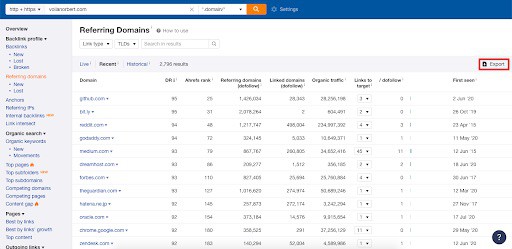
My ideal target site for a guest post meets these criteria:
- Relevant to our niche
- DR of 50+
- 3,000+ visitors per month
- Trust Flow of 20+
Filter out any low-DR sites and any that are irrelevant to your niche. You’ll be left with a few hundred strong contenders.
If you have the opportunity to target sites with very high DRs, prioritize those. A backlink from a DR 90 website is worth more than five backlinks from lower DR sites. The general rule of thumb is this: the higher the DR, the fewer guest posts you’ll need to write to improve your ranking.
Find and Reach Out to People in Charge of Website Content
Once you’ve generated a list of sites, you need to start your outreach. You can do this one of two ways. Either you:
- Find the contact details of the editor and pitch directly
- Search for the guest post page and follow the instructions
Out of these two options, I generally go with the former.
If the editor’s name is not listed on the site, I can usually find them on LinkedIn by searching for the name of the site and “content manager” or “editor.” Once I’ve found a name, I add it to the spreadsheet.
If you can’t find readily available contact information, you can use a tool like FindEmails or Voila Norbert. All you need is a domain and the person’s name to do this.
Once you’ve got the names and email addresses you need, it’s time to start making contact. When I was new to guest posting, I tended to lead with excessive flattery in the hopes it would endear me to the editor. Don’t do it. Everyone loves praise, but they can also tell when it isn’t genuine.
A short email is best. Tell the editor who you are, what you can offer, and what you want from them. Here’s an example of the outreach template we use to land posts for Voila Norbert.

Notice how this email uses a friendly tone, gets to the point, and provides evidence of the writer’s credibility through links to published pieces.
I don’t always get a reply to my outreach emails. That’s just part of the process. If you don’t get a response, you can follow up politely after a week or so. If you still don’t hear anything, let it go and move to the next target.
Come Up with Guest Post Ideas
A lot of content marketers we’ve talked to say that coming up with guest post ideas is more difficult than writing the content. They often worry their ideas aren’t original enough. The reality is that there are no completely new ideas left to explore. Instead, aim to cover existing topics from a different angle or with a new spin.
Here are the strategies I use:
Use Keyword Planner
I use Google Keywords Planner for my keyword research. Choose “Start with a website” and type in your target site. You’ll see a list of that site’s top keywords:
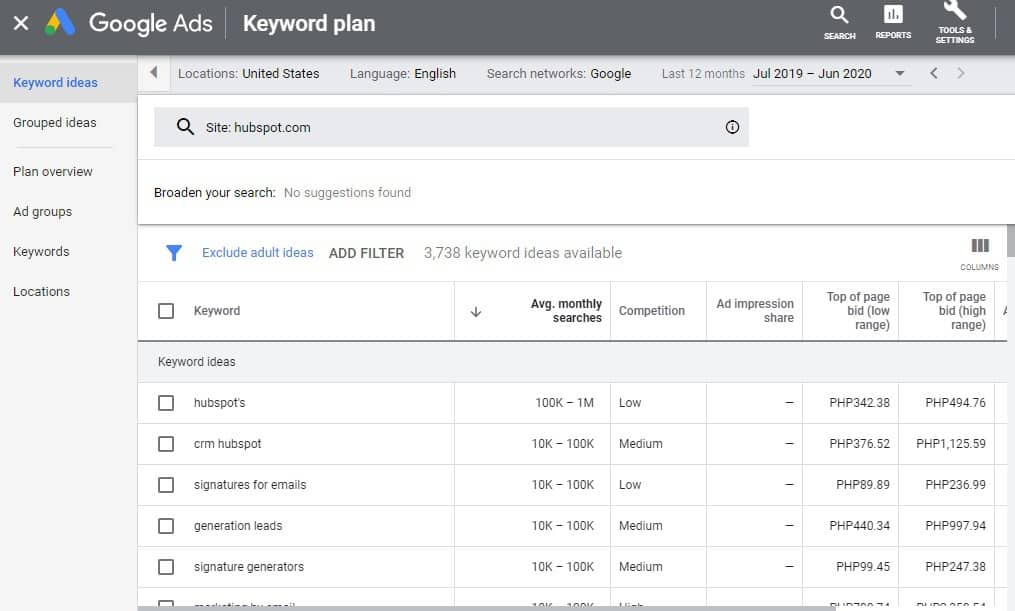
Next, I go to the “Start with keywords” section and enter some of those top keywords I identified in the previous step:
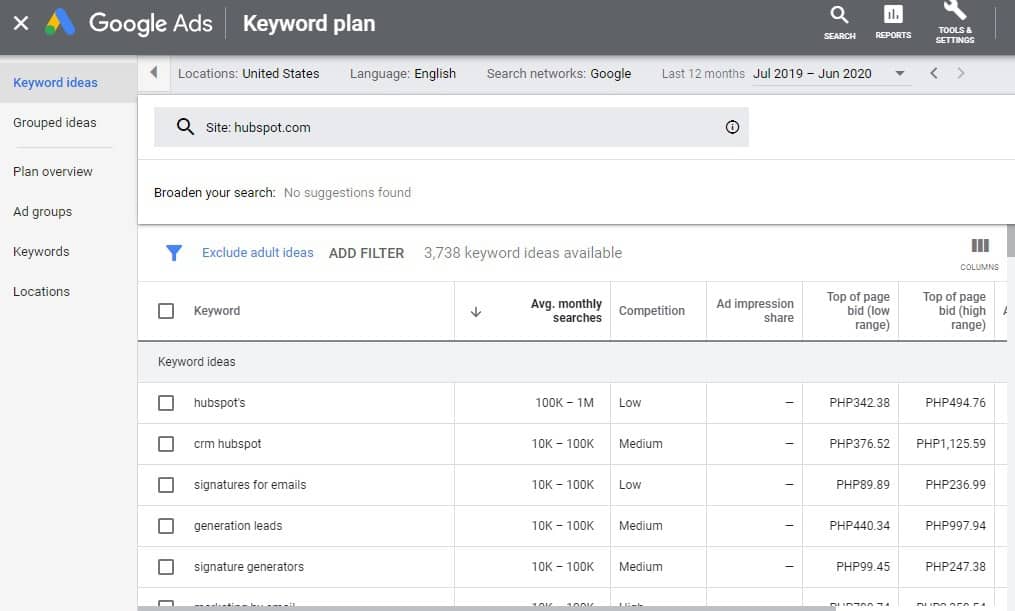
Using this strategy, I get ideas for relevant keywords that the site isn’t ranking for. I can then build my content ideas around these terms.
Take inspiration from curated content
There are a lot of sites and tools that curate content. One of my personal favorites in the marketing niche is the Zest app. The app uses a mixture of AI and human curators to deliver content relevant to your interests. I find my content feed incredibly useful for inspiring guest post ideas.
What subjects are dominating your Zest feed in the relevant niche? If your target site doesn’t have content on that topic, you can add it to your list for guest posts.
Use social engagement data
Social media users share content they find helpful and interesting. Therefore social engagement data is a gold-mine of useful information about what content is likely to be popular.
I use BuzzSumo to discover articles in my niche that are enjoying high levels of engagement:

If an article is getting a lot of shares on social media, but your target site hasn’t covered that subject yet, it’s a safe bet that their readers will also find it interesting.
Discover keyword gaps
Those methods listed above will help you come up with content ideas. You’ll need to validate if your idea has been written about on the site before. Enter the following on Google to check this:
site: website.com keyword
Let me give you an example.
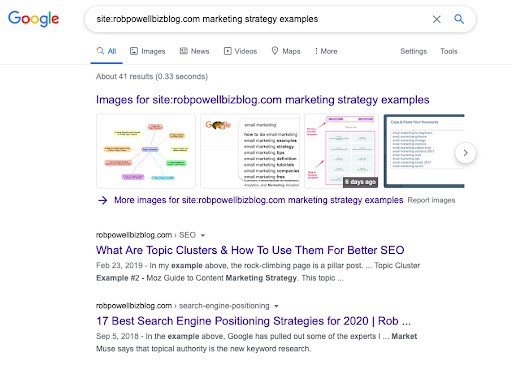
I searched for the term “marketing strategy examples” on this site. You can see from the screenshot above that a number of results appeared.
None of the search results appear to target my keyword. That makes it a safe bet for a pitch. You’ll need to find a couple of good ideas that feel like a good fit for the site and the audience. If you do this, there’s a high chance you’ll be given a chance to write an article for a site.
Write Your Guest Post
Before I start writing a guest post, I always check the website’s style guide. The editor might send this to you when you submit your ideas, or you might need to ask for it. Study it and make sure you understand the guidelines. Ask for clarification if anything is unclear, and follow the rules to the letter. If you ignore them, your post might be rejected. Make sure the backlinks to your site are relevant and appropriate. If they’re not, they will be removed – which defeats the point of guest posting!
Your post should be well-written and free from spelling and grammatical errors. I run all my posts through a tool like Grammarly before I send them in. Make sure you double-check your facts and cite the sources of any statistics.
Along with your post, submit a clear, professional headshot and a short author bio.
Ramp Up Your Guest Posting
I was surprised by how quickly our link building scaled. Once you start publishing articles, you’ll get more web traffic and start building authority as an expert in your niche. This will lead to more guest posting opportunities.
Our guest posting was a one-person operation at first, with me writing a few articles a month. But it soon became impossible to keep on top of it alone. You don’t want to spend all your time writing articles – you have a business to run!
When you reach this stage, you can hire writers to help you. You can find freelance writers through freelancing sites like Upwork, or ask for recommendations from colleagues. Here’s something we learned quickly: hire the best writer you can afford. A good writer is an investment and will quickly pay for themselves in quality work delivered on time.
If you’d rather do all the writing yourself, you can outsource other elements of the process. We hire freelancers to do outreach and keyword research, and it frees up the experts’ time to do what they do best.
Scaling Your Link Building Through Quality Guest Posts
Despite fears to the contrary, guest posting is not dead. As the competition for the top spots on search engine results pages continues to rise, a robust link building strategy is essential. And guest posting is the best way to achieve the results your hard work deserves.
Our experience at Voila Norbert has proven that this is possible. We started with just a few guest posts, and are now consistently landing more than 30 per month. If you follow the process I’ve outlined and persevere, you can do the same.
Guest posting is an ongoing journey, and you won’t hit all your goals overnight. You need to see it as a long-term strategy and be prepared to put the work in consistently. Aside from gaining high-quality backlinks to your site, you’ll also boost your brand’s credibility.
Here’s to taking that first step!